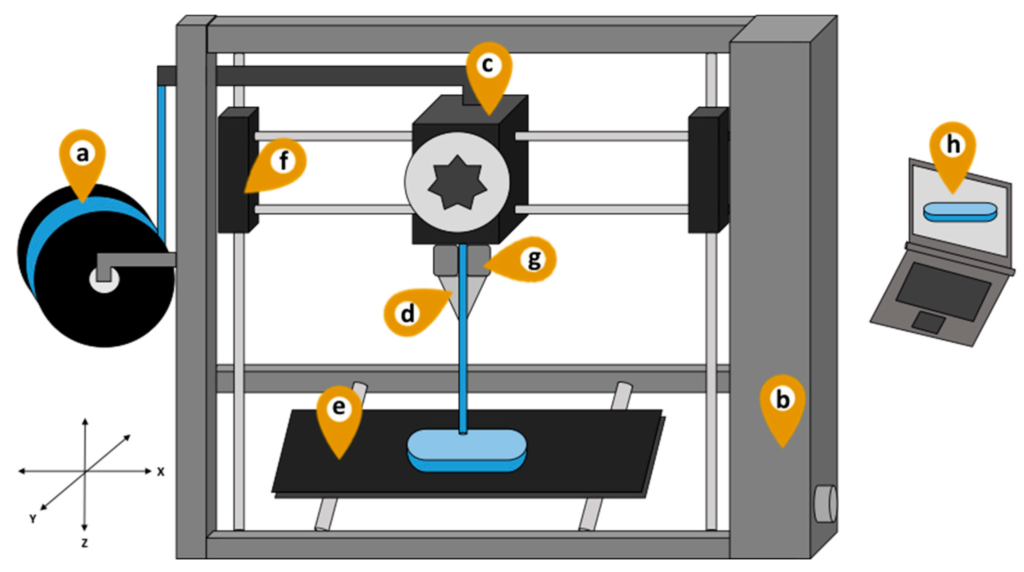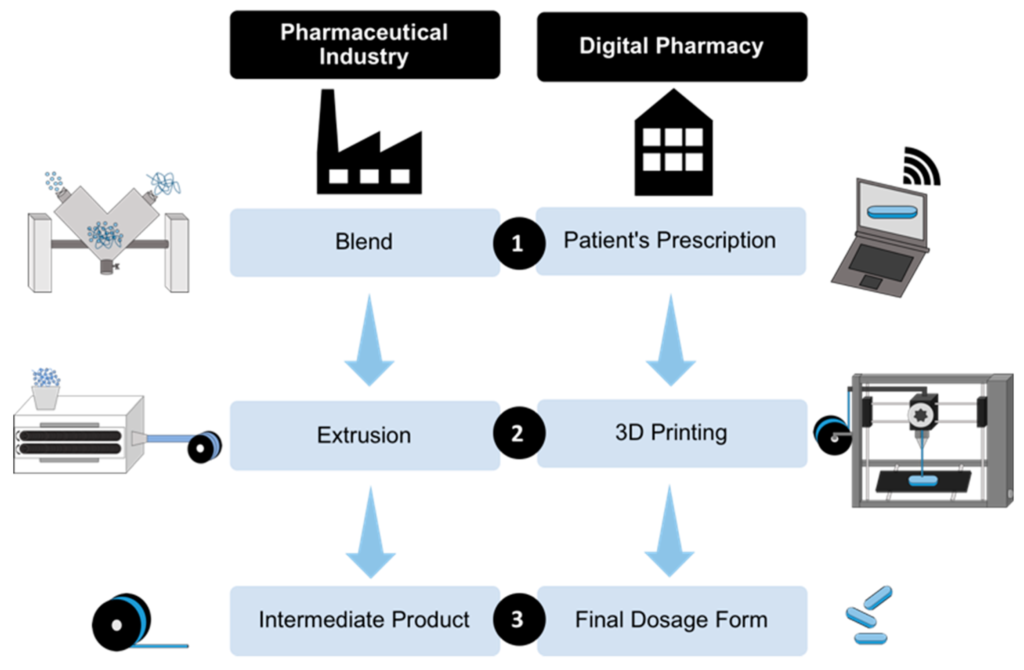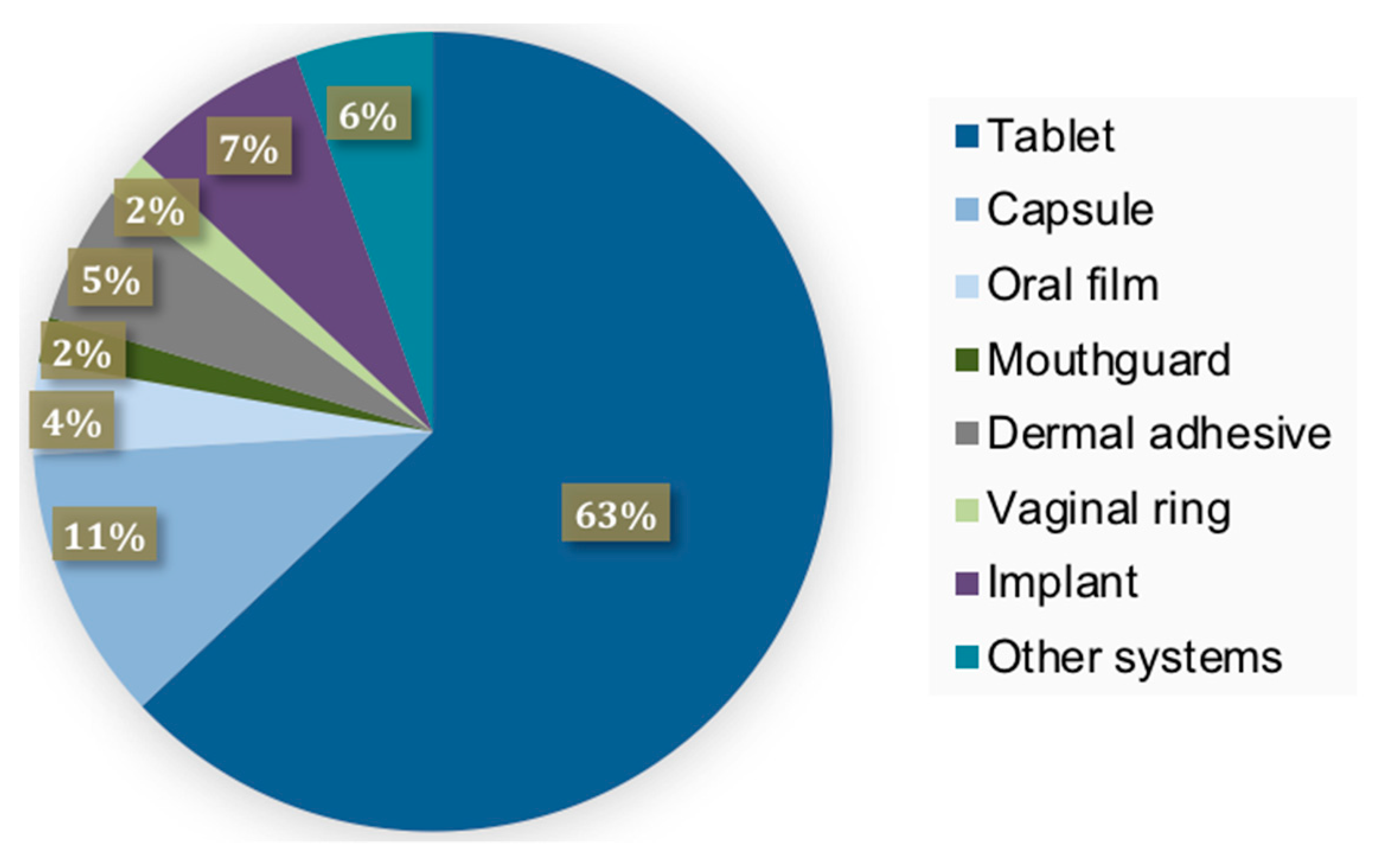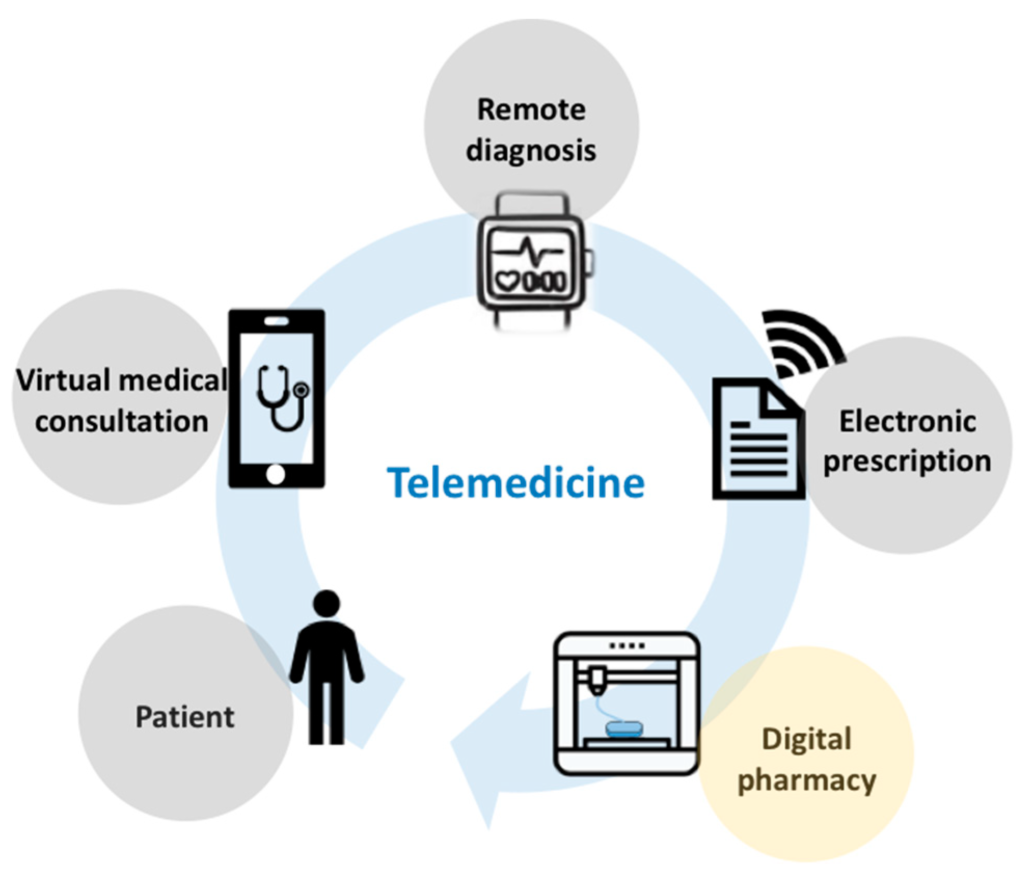In the recently published, ‘The Digital Pharmacies Era: How 3D Printing Technology Using Fused Deposition Modeling Can Become a Reality,’ Brazilian researchers further examine the potential of new technology for the pharmaceutical industry.
Digital fabrication has the obvious ability to transform many industries today, but the medical realm and other interconnected industries are already well on their way to participating in a highly beneficial technological revolution. Here, the researchers explore the use of FDM 3D printing to extrude drug-loaded filament.
Obviously, 3D printing offers a host of benefits for drug manufacturing. Like medicine itself, the ability to offer patient-specific treatment is monumental, including the fabrication of:
- Flexible dosages
- Different shapes
- Multiple active pharmaceutical ingredients
- Modulated release kinetics
“Moreover, the most diversified and sophisticated drug delivery devices for oral, dermal, and implantable administration can be produced with high accuracy using 3D printers,” stated the researchers.
Still, the industry is heavily entrenched in traditional methods of producing medications, and the researchers raise the question of whether or not FDM 3D printing is optimal for ‘largescale production.’
When a tablet machine is still 60 times faster, it is obvious 3D printing technology has a long way to go before becoming an accepted replacement.
“3D printers cannot match the velocity of industrial tablet machines, but they certainly serve to address an existing therapeutic gap with regard to the need for individualization of drug therapy, acting in a complementary or alternative manner to the conventional drug product production,” stated the researchers.
Another one of the advantages of 3D printing is its ability to offer quality, on-demand, small batch manufacturing—which may offer a more realistic approach for small-scale production at pharmacies.
While 3D printed medications such as epilepsy drug Spritam hit the market with quite a splash, there are still of course number regulatory and safety issues to be considered, and there would need to be many customizations made to 3D printers overall; however, the hardware is now both affordable and accessible. Currently, there is no model ready for pharmaceutical use, and parts would all need to be easily sterilized. Nozzles and software would need to be redesigned too.

Schematic representation of a pharmaceutical fused deposition modeling 3D printer with indications of the specific points in which adaptations will be required for pharmaceutical production. (a) Spool, (b) printer enclosure, (c) extruder head, (d) nozzle, (e) build platform, (f) motor, (g) heater, (h) 3D design software.
Drug-loaded filaments would need to be created through:
- Mixing of the components for each batch.
- Hot-melt extruder produces filaments via shearing and heating.
- Filament then must be packed into spools, with pharmaceuticals sealed hermetically to avoid any breakdown or contamination.
Drug delivery would depend on medical technicians setting parameters, along with printer and spool preparation. Proper packaging of the product is critical too. And while the process is most important, without cooperation in figuring out what is needed from regulatory and patent agencies, the path to success would be nearly impossible.
“Research groups over the world are currently working to identify the nuances of the production process, and despite the great progress made so far, palpable planning to bring these products to life is necessary,” conclude the researchers.
“The potential of 3D printing for the development of personalized drug products is undeniable; however, machine adaptations are fundamental for proper pharmaceutical use. In addition, a viable production process needs the co-participation of the pharmaceutical industry (to extrude filaments on a large scale), and digital pharmacies (to print drugs according to patient-specific prescriptions).”

Schematic steps required for the industrial production of filaments and the elaboration of personalized drug delivery device in digital pharmacies.
There is no doubt that 3D printing will be playing a huge role in the pharmaceutical industry, and the impacts are just beginning, leaving researchers to examine the challenges, study the benefits of patient-specific care, and examine benefits such as affordability.
What do you think of this news? Let us know your thoughts! Join the discussion of this and other 3D printing topics at 3DPrintBoard.com.

The share of drug-delivery devices (n = 54) that could be printed using fused deposition modeling 3D printing, as published in research papers between years 2014 and 2018 (SciFinder®).
Subscribe to Our Email Newsletter
Stay up-to-date on all the latest news from the 3D printing industry and receive information and offers from third party vendors.
You May Also Like
Precision at the Microscale: UK Researchers Advance Medical Devices with BMF’s 3D Printing Tech
University of Nottingham researchers are using Boston Micro Fabrication‘s (BMF) 3D printing technology to develop medical devices that improve compatibility with human tissue. Funded by a UK grant, this project...
3D Printing Webinar and Event Roundup: April 21, 2024
It’s another busy week of webinars and events, starting with Hannover Messe in Germany and continuing with Metalcasting Congress, Chinaplas, TechBlick’s Innovation Festival, and more. Stratasys continues its advanced training...
3D Printing Webinar and Event Roundup: March 17, 2024
It’s another busy week of webinars and events, including SALMED 2024 and AM Forum in Berlin. Stratasys continues its in-person training and is offering two webinars, ASTM is holding a...
3D Printed Micro Antenna is 15% Smaller and 6X Lighter
Horizon Microtechnologies has achieved success in creating a high-frequency D-Band horn antenna through micro 3D printing. However, this achievement did not rely solely on 3D printing; it involved a combination...






























